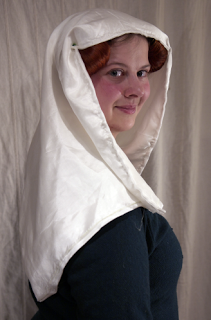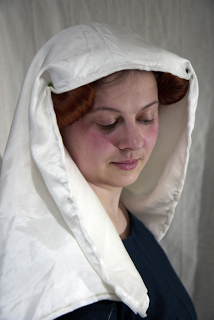A few weeks ago, we made an order for something that feels like an everyday adventure to me: We subscribed for an organic produce box. A smallish company in our region offers home delivery every week, with an assortment of fruits and vegetables, organically produced - and you can even opt for regional vegetables only, which leaves you with truly seasonal food.
I love this box. First of all, there's less grocery shopping to be done: We still buy the few things we use in larger quantities, potatoes and occasionally onions, at our normal grocery store. But the big deal about shopping for fruit and vegetables, for me, was always choosing. Having to decide between produce that was grown locally or imported in - or between buying imported food or nothing at all, in some cases. Then choosing what to get. The things well-known, with the preparation down pat? Or something else for a different taste (that might not please)? Since I am one lazy bugger, I ended up on the familiar grounds most of the time.
That is now a problem of the past.
While you can opt out for some of veggies or fruits you don't like, the subscription box will arrive, and there's probably something new in it from time to time - just what I had wished for. They even add a sheet of paper with information and a recipe suggestion for the more exotic things. Before the box, I was looking for recipes in the internet to get inspiration on what to buy. Nowadays, I'm just googling the main vegetable ingredient I want to use and browse through the hits until I find something that sounds appealing. Which has added a touch of adventure to cooking - exactly what I had hoped for. And there is much difference between "not buying something" and "canceling an order for something" - though I usually check a week before what we will get. (Because I'm also very, very curious.)
Is it cheap? No. Our grocery bill has gone up significantly with the box - but so has the amount of fruit and vegetables consumed. And the quality of the foods way surpasses what we can usually get, each and every single piece. There's even a refund should something have gone bad inside, unnoticed by the handlers.
Is it convenient? Well, yes and no. Yes, because the time spent in grocery stores, produce aisles or farmers' markets is cut down to or close to zero. On the other hand, you have to be there when they deliver or have an arrangement, perhaps with a neighbor to receive the box for you (and hand back the empty one).
Is it worth it? In my opinion: Totally. Which is why I write about it here (instead of about medieval garments like I'm supposed to).
I love this box. First of all, there's less grocery shopping to be done: We still buy the few things we use in larger quantities, potatoes and occasionally onions, at our normal grocery store. But the big deal about shopping for fruit and vegetables, for me, was always choosing. Having to decide between produce that was grown locally or imported in - or between buying imported food or nothing at all, in some cases. Then choosing what to get. The things well-known, with the preparation down pat? Or something else for a different taste (that might not please)? Since I am one lazy bugger, I ended up on the familiar grounds most of the time.
That is now a problem of the past.
While you can opt out for some of veggies or fruits you don't like, the subscription box will arrive, and there's probably something new in it from time to time - just what I had wished for. They even add a sheet of paper with information and a recipe suggestion for the more exotic things. Before the box, I was looking for recipes in the internet to get inspiration on what to buy. Nowadays, I'm just googling the main vegetable ingredient I want to use and browse through the hits until I find something that sounds appealing. Which has added a touch of adventure to cooking - exactly what I had hoped for. And there is much difference between "not buying something" and "canceling an order for something" - though I usually check a week before what we will get. (Because I'm also very, very curious.)
Is it cheap? No. Our grocery bill has gone up significantly with the box - but so has the amount of fruit and vegetables consumed. And the quality of the foods way surpasses what we can usually get, each and every single piece. There's even a refund should something have gone bad inside, unnoticed by the handlers.
Is it convenient? Well, yes and no. Yes, because the time spent in grocery stores, produce aisles or farmers' markets is cut down to or close to zero. On the other hand, you have to be there when they deliver or have an arrangement, perhaps with a neighbor to receive the box for you (and hand back the empty one).
Is it worth it? In my opinion: Totally. Which is why I write about it here (instead of about medieval garments like I'm supposed to).






